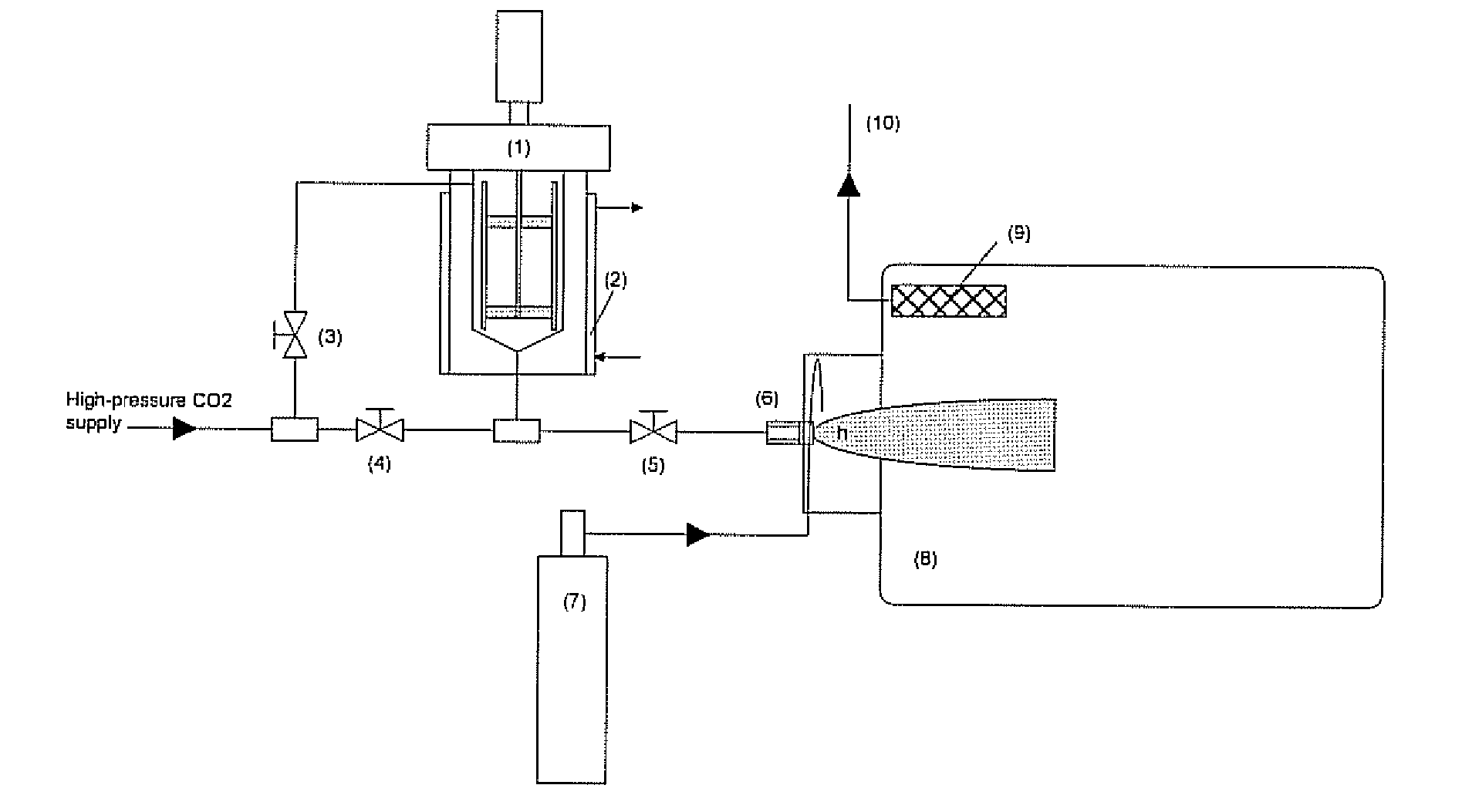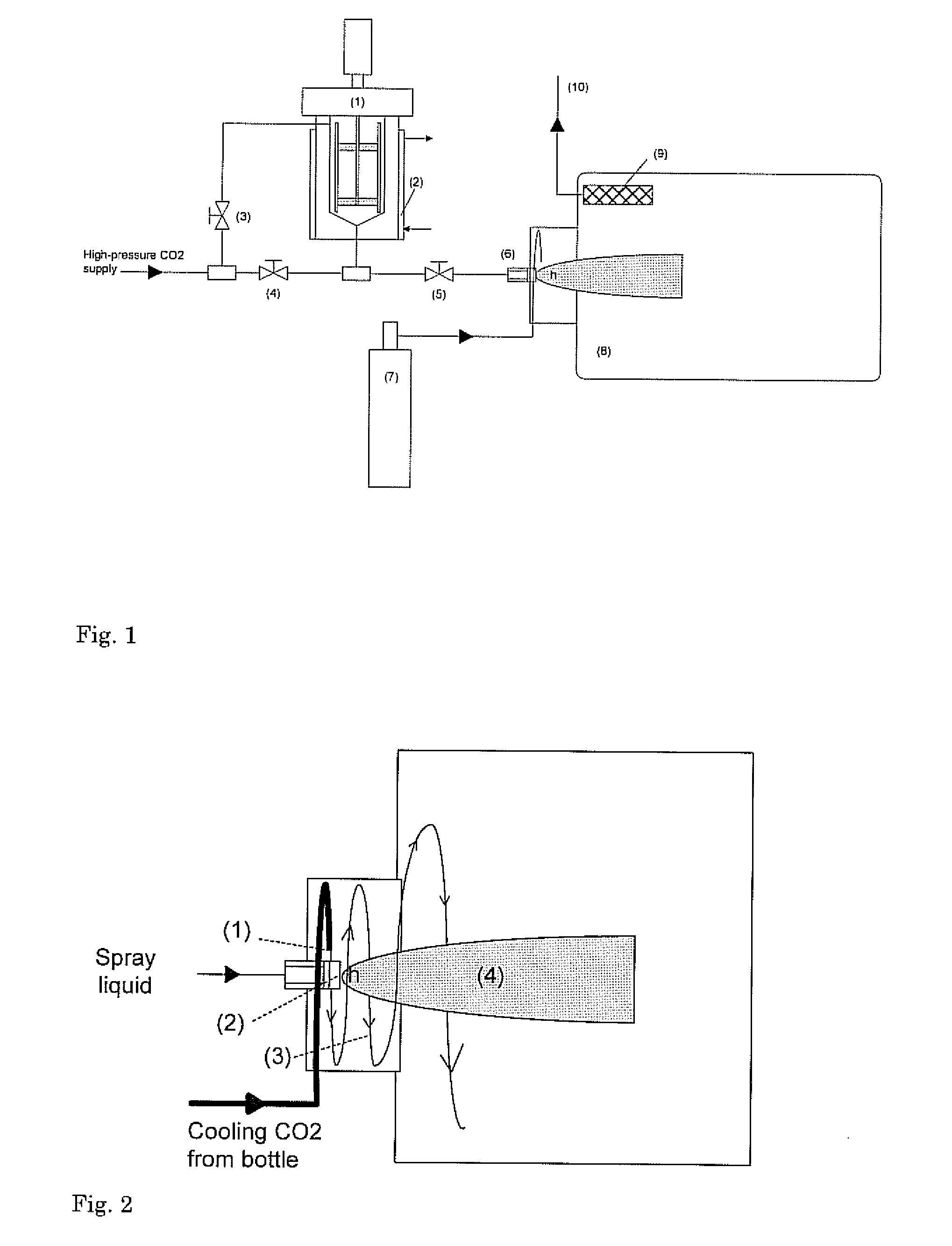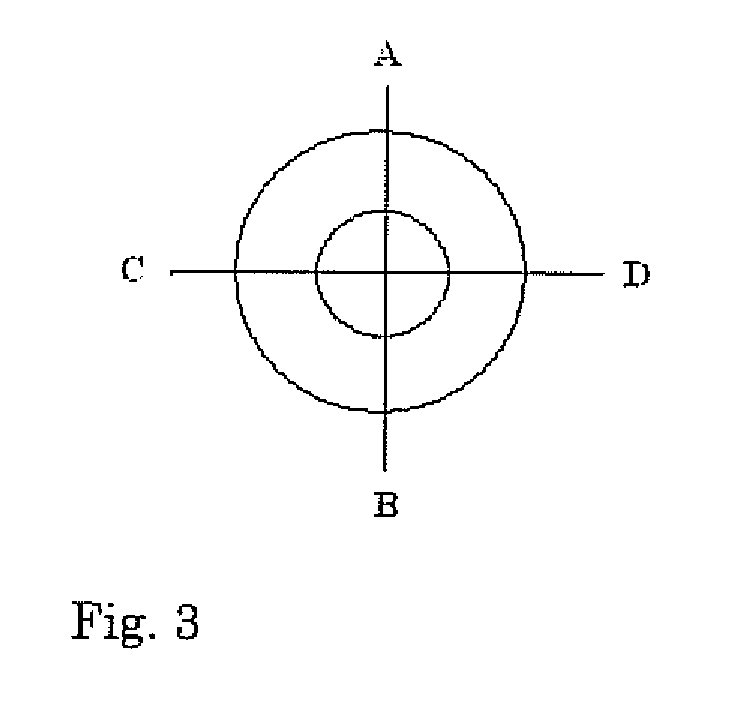Dispersion structuring agent
a technology of dispersion and sintering agent, which is applied in the direction of fatty oil/fat/waxe solidification, food science, application, etc., can solve the problems of high energy consumption, very fine powder formed by fat micronization, and relatively limited choice of suitable fats, etc., to achieve high volatility, reduce sintering of micronized particles, and recover quickly
- Summary
- Abstract
- Description
- Claims
- Application Information
AI Technical Summary
Benefits of technology
Problems solved by technology
Method used
Image
Examples
examples
Method to Determine Pourability
[0052]Pourability for pourable compositions according to the invention is measured using an instrument based on USDA consistometer or Adam's consitometer. It consists of a 10 ml plastic cylinder with both ends open and a board with concentric circles. These concentric circles are used to indicate the distance the fluid has travelled during a certain period of time. The pourability of the samples is assessed at refrigerator temperature in order to analyze if they are pourable at fridge temperature. When the sample has a temperature of 4° C., the plastic tube is placed at the central circle of the concentric circles and it is filled with the sample after it has been shaken by hand ten times up and down. When the tube is removed, the sample starts to flow and spreads over the board. The path length of the flow is measured after 40 seconds at four different points of the concentric circles (A, B, C, and D) as it is shown in FIG. 3. The weight of the board ...
PUM
| Property | Measurement | Unit |
|---|---|---|
| pressure | aaaaa | aaaaa |
| temperature | aaaaa | aaaaa |
| pressure | aaaaa | aaaaa |
Abstract
Description
Claims
Application Information
 Login to View More
Login to View More - R&D
- Intellectual Property
- Life Sciences
- Materials
- Tech Scout
- Unparalleled Data Quality
- Higher Quality Content
- 60% Fewer Hallucinations
Browse by: Latest US Patents, China's latest patents, Technical Efficacy Thesaurus, Application Domain, Technology Topic, Popular Technical Reports.
© 2025 PatSnap. All rights reserved.Legal|Privacy policy|Modern Slavery Act Transparency Statement|Sitemap|About US| Contact US: help@patsnap.com



